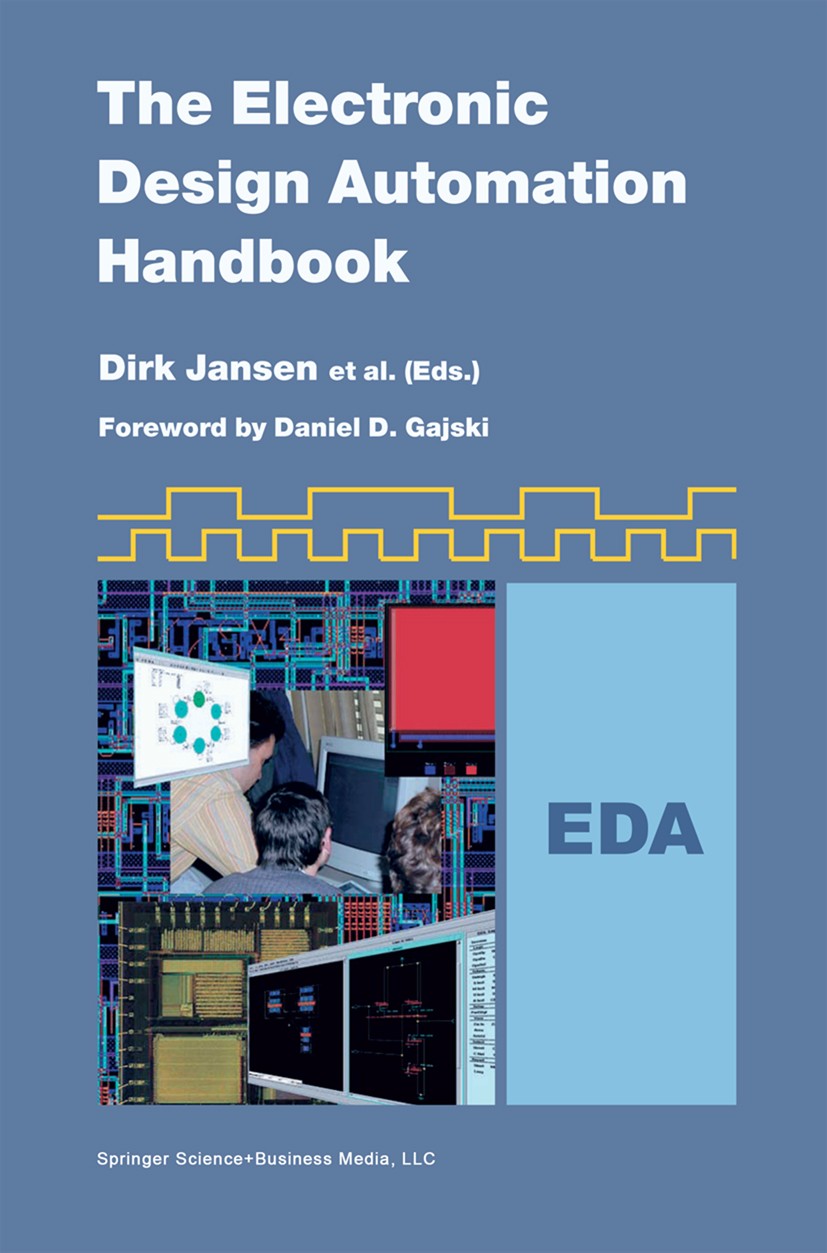| 书目名称 | The Electronic Design Automation Handbook |
| 编辑 | Dirk Jansen (Director of ASIC Design Center) |
| 视频video | http://file.papertrans.cn/909/908572/908572.mp4 |
| 概述 | Details design tools and techniques for high performance ASIC-design.Shows the best practices for creating reusable designs in an SoC design methodology |
| 图书封面 |  |
| 描述 | When I attended college we studied vacuum tubes in our junior year. At that time an average radio had ?ve vacuum tubes and better ones even seven. Then transistors appeared in 1960s. A good radio was judged to be one with more thententransistors. Latergoodradioshad15–20transistors and after that everyone stopped counting transistors. Today modern processors runing personal computers have over 10milliontransistorsandmoremillionswillbeaddedevery year. The difference between 20 and 20M is in complexity, methodology and business models. Designs with 20 tr- sistors are easily generated by design engineers without any tools, whilst designs with 20M transistors can not be done by humans in reasonable time without the help of Prof. Dr. Gajski demonstrates the Y-chart automation. This difference in complexity introduced a paradigm shift which required sophisticated methods and tools, and introduced design automation into design practice. By the decomposition of the design process into many tasks and abstraction levels the methodology of designing chips or systems has also evolved. Similarly, the business model has changed from vertical integration, in which one company did all the tasks fro |
| 出版日期 | Book 2003 |
| 关键词 | ASIC; SoC; Standard; VHDL; VLSI; automation; circuit design; layout; metal-oxide-semiconductor transistor; si |
| 版次 | 1 |
| doi | https://doi.org/10.1007/978-0-387-73543-6 |
| isbn_softcover | 978-1-4419-5369-8 |
| isbn_ebook | 978-0-387-73543-6 |
| copyright | Springer Science+Business Media New York 2003 |
 |Archiver|手机版|小黑屋|
派博传思国际
( 京公网安备110108008328)
GMT+8, 2025-11-13 06:52
|Archiver|手机版|小黑屋|
派博传思国际
( 京公网安备110108008328)
GMT+8, 2025-11-13 06:52


